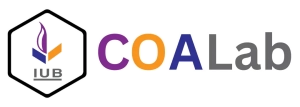Minor in Astronomy and Astrophysics
Includes Radio and Space Science
This is the first ever minor in this subject in Bangladesh and we want to make it as widely available to IUB students as possible. The minor is open to everyone, but specially suited to the students of CSE, EEE and Physical Sciences, that is the students belonging to SETS. The minor has a mixture of observational and computational astronomy, radio instrumentation, space science and more mathematically rigorous theoretical astrophysics. One course (AST 201) focuses on observational astronomy and includes taking pictures of the sky using an optical telescope and analyzing the resulting data. Two courses (AST 410 & PHY 434) focus on radio astronomy, radio communication and space science and technology. The remaining two courses (AST 301 & PHY 402) are about theoretical astrophysics where the physical processes controlling some astronomical objects will be introduced. All courses will have strong emphasis on programming (à la CSE) and include design-based projects (à la EEE).
You will see a list of 12 courses in iRAs, but actually only 5 from these 12 are being offered for the first phase of this minor. So sorry to say that, as of now the minor does not offer any elective courses, all 5 courses are mandatory.
In order to see what you will do (not learn, but do!) in each course check the list of courses below. But here are some motivational points. You should take this unique and unifying minor for any or all of the following reasons.
- Building a career in astronomy, astrophysics, cosmology, radio instrumentation, satellite communication or space science.
- Enchance your CV for graduate school applications. Students of physics, mathematics, CSE, EEE, all can benefit from such a minor while applying for international graduate schools.
- Enhance your CV for job applications in industries that focus on mathematical and statistical analysis, python programming, data science and/or engineering design.
- Develop and/or improve your skills in using python for solving practical scientific problems. Remember, a background of CSE is further enhanced if you can show your ability to use computing for solving real-world problems.
- Develop and/or improve your skills in designing an engineering-scientific project. All 5 courses include doing a project. If you are from engineering, you will particularly like the engineering design aspects.
- By writing a report for the project in each course, you will learn how to write a scientific paper with publishable figures and results.
- After completing the minor, you will be eligible to participate in the research projects of COALab some of which could lead to publications in international journals and conferences.
